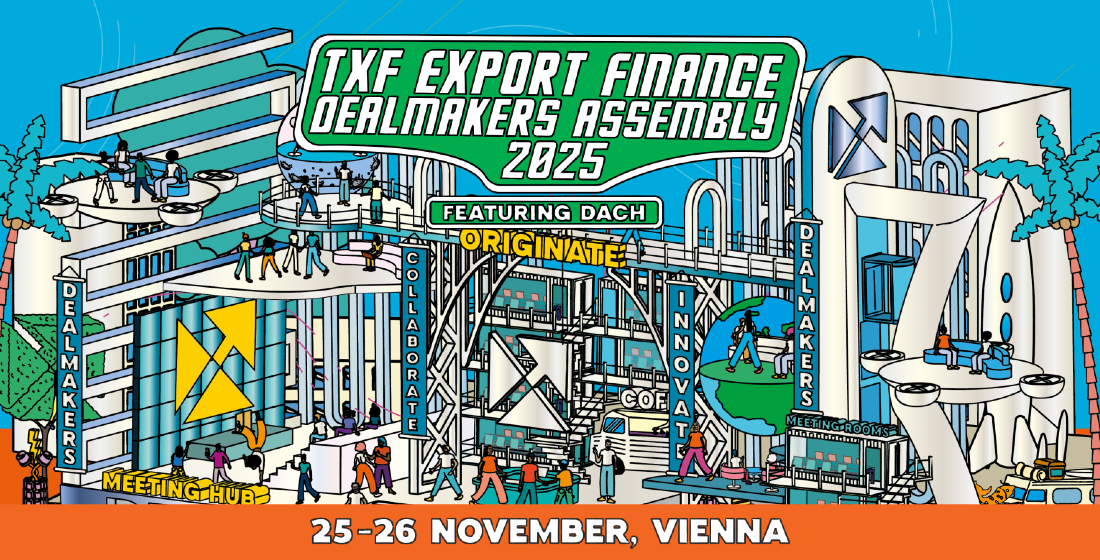Irish wind: A fledgling project finance sector set for take-off?
With the global cost of offshore wind dropping and new projects developing seemingly every day, the windy coast of Ireland is left with only one offshore wind farm. 10 years ago the potential in Irish offshore was seen, but these promising projects hit a wall. What is happening and how is it changing?

Having grown up in Ireland, I do not need technical surveys to tell me there is a lot of wind – coastal walks with my parents, chapstick in every coat pocket and a ruddy Irish sun tan (known everywhere else as wind burn) were confirmation enough. So why has there been so little offshore wind development in Ireland?
Although there are over 250 onshore windfarms in the Republic of Ireland, many of which started operating in the last 10 years, there has been only one offshore project completed to date – Scottish energy company SSE’s $1 billion-plus 530MW Arklow Bank wind park, which comprises 193 turbines and sits 11.2km off the east coast of Ireland. The project was built in the mid-2000s and has been operational for around 15 years, but in that time no other wind farms have joined its ranks, despite the Irish coast providing roughly 900,000 square kilometres, which is around 10 times the Irish land mass.
The lack of Irish offshore wind development is at odds with the UK and it cannot be argued any longer that vast government subsidy is required. For example, the 950MW Moray East and 1,386 MW Hornsea 2 offshore wind projects in the UK both achieved a record low contract for difference (CfD) strike price of £57.5/MWh in 2018, which very much hints at the future of UK offshore wind being zero subsidy.
The potential
There’s no denying the amount of wind potential along the entire Irish coastline. As Peter Lefroy, chair at the Irish Wind Energy Association (IWEA) and project director at Innogy Renewables Ireland, the lead developer, alongside Saorgus Energy, of the next major offshore wind scheme in Ireland, the 600MW Dublin Array offshore wind project, tells TXF: “The greatest [offshore wind] potential lies further along the south coast before you even look towards the west.”
While there is potential for offshore wind parks on the west coast, the water is too deep for ordinary offshore wind projects. The east coast on the other hand has the Irish Sea, with a much shallower seabed closer to the shore, which is why the majority of Ireland’s prospective offshore wind farms are planned to take place here.
There are a series of projects, known as the ‘legacy’ and ‘enduring’ projects with around six schemes planned and even more site explorations currently underway. Developers will be looking at the success of debut offshore wind project financings across Europe, for example like Saint Nazaire in France, for financing templates, and to assess the level of construction risk stapled to financings in new, unchartered offshore wind farm waters.
It is important to note, the west coast holds a lot of potential further down the line for floating offshore wind projects too. But the technology is still in early stages and has only been rolled out in the UK on lakes – so far at least. Market observers have said floating offshore wind farms are not expected to appear until after 2030.
The legislation (or lack of) underpinning the development of the Irish offshore wind market has been one of the main barriers to entry for project sponsors. Firstly, it has meant developers have struggled to accurately estimate the exact capital cost and economic viability of such projects. As Niamh Kenny, DP energy’s business development manager says – “in the case of offshore wind in Ireland, the lack of projects are purely legislative and based on regulatory constraints.”
Likewise, Ireland’s so called ‘legacy and enduring projects’ have had the wind taken out of their sails because there’s been no legislation explaining to sponsors what project criteria they have to adhere to. As with all offshore wind developments, this criteria includes environmental and social assessments and consents, and this kind of preordained regulatory framework just doesn’t exist in Ireland.
Only a handful of these legacy projects have gained some form of consent – but at this stage it’s not clear what legislation is needed and which criteria applies to what schemes. This has significantly impacted the cost of offshore wind farms in Ireland, which remain expensive, despite the cost of such farms decreasing by 30% in the rest of the UK, as the market benefits from economies of scale and the commercialisation of its supply chain.
Onshore wind financings in Ireland have boomed since the government introduced the first ‘Renewable Energy Feed In Tariff’ (REFIT) auction in 2009. And since then there has been over three auctions, with the last of those projects becoming operational in 2019.
The REFIT regime has propelled considerable growth in Irish onshore wind projects, but offshore wind projects are not eligible for the REFIT scheme. “The simple fact of the matter is, what speared the interest in onshore wind was access to the REFIT scheme,” as Justin Moran, head of communications at IWEA says.
Plugging into the grid
The current Irish government released its ambitious climate action plan in mid-2019: to generate 70% of the Republic of Ireland’s energy from renewable sources by 2030. And Irish Fine Gael politician Taoiseach Leo Varadkar insists Ireland is going to see a, “revolution in terms of offshore wind.”
The good news is the Marine Planning and Development Management (MPDM) bill lays out the legal requirements of all offshore wind developments. The first step for an offshore wind farm under MPDM is that developers have to apply for planning permission to the Minister of Communications, Climate Action and Environment (MCCAE). If these applications are successful, they will have to go through six steps before being awarded a Maritime Area Consent.
These steps include, carrying out environmental surveys and site investigations, the application for a grid connection to Eirgrid, a licence to generate and to construct the CRU, as well as successfully gaining an RESS auction bid, and apply for development consent from the MCCEA. These steps do not greatly differ from other offshore programmes in Northern Europe.
But the major legislative boost for the industry will come from the Renewable Electricity Support Scheme (RESS), a replacement to REFIT, which means offshore wind project developers will be eligible to bid under the new tariff regime. Coupled with the new legislation, which is set to create a sound regulatory foundation for offshore wind sponsors, there is no doubt Ireland’s offshore market will boon sooner rather than later. As Moran puts it, “there is an incredible amount of momentum and enthusiasm behind the development of offshore.”
Ready for take-off
Despite the new FiT regime and fledgling legislation backing offshore wind projects, developers are in no rush to bid in the next auction. Market participants have said sponsors are unlikely to have projects built and connected to the grid before 2025.
“If anything comes online before then, it will be projects that have been brought forward under effectively bilateral contracts,” says Lefroy. “We would see this as being suboptimal for the industry and suboptimal for the consumer. Why? Well it would deliver much higher prices than a competitive option and would be based on older technology.”
For Ireland to achieve its goal of 3.5GW of offshore wind power being online by 2030, the related grid infrastructure also needs to be built, especially on the east coast which is where project sponsors are looking to initially roll out such projects. Additionally, a representative of the MCCEA tells TXF that the department have established a working group to best decide the offshore grid model for Ireland.
Until that grid infrastructure is developed on scale, Ireland’s offshore wind market will remain expensive. “Sponsors are not going to be able to match the low tariff prices which you’re seeing in the UK,” Lefroy explains. He also points out that the Dail is unlikely to provide any scheme similar to Offshore Transmission Owners (OFTO) or a centralised development model. This means until gird transmissions are centralised, the initial cost of grids will keep developers overheads high.
There is also ongoing Irish elections. The Taoiseach’s party Fine Gael are likely to be replaced by Fianne Fail. The climate action plan was brought forward under Fine Gael, however, Fianne Fail are also in support of this plan and are unlikely to make any major changes. This means the risk to the offshore wind industry under a new government is relatively low, but the upcoming elections themselves are likely to delay the MPDM bill somewhat.
Despite these delays and hurdles, there is still glimmers of hope from those within the industry. “This isn’t a pipeline issue,” concludes Moran. “It’s a question of can we get the planning, the grid, the market, and the infrastructure in place to enable us to deliver this by 2030.” So it seems the growth of this fledgling sector is imminent – but the exact timeline very much depends on the renewable urgency and agenda of the incoming government of Ireland.
Now time to get up to speed on the markets.
Here's our exclusive TXF in depth articles
Anglo American: The light at the end of Sirius’ funding pit?
Anglo American agreed a £405 million ($527 million) rescue deal with Sirius Minerals this week. The takeover is a lifeline for Sirius which faced collapse if it could not find alternative funding for its struggling Woodsmith polyhalite mining project in the UK. But what is the benefit for Anglo?’
Keynote: Meet Mairead Lavery, EDC’s positive philosopher
TXF finds Mairead Lavery full of vigour about her first year as president and CEO of EDC in advance of her first performance review with the chair of the board. Her energies are devoted to promoting Canadian exporting companies on a path to sustainability, inclusion and diversity. Is she concerned about EDC’s perception as being more a bank than a traditional ECA? Not a bit of it. What about local content requirements? Competition with other ECAs? It’s a question of philosophy.
Moma: Kenmare turns project debt vanilla
Ireland-based Kenmare Resources returned to the debt markets in December to refinance the remaining debt backing its Moma titanium mine in Mozambique. But this time round, the deal has a new lender line-up, vanilla structure, looser covenants and cheaper pricing, which all reflect the strength of the mine’s cash flows and its expansion capacity.
Exclusive TXF Tracker and Originals content
GCA seals loan for ammonia project in Texas
Gulf Coast Ammonia (GCA) – a joint venture between German energy trader Mabanaft and US-based private equity firm Starwood Energy – closed a $574.3 million project loan to back the development of its anhydrous ammonia plant in Texas on 30 December 2019.
MET Group upsizes annual RCF to €950m
Swiss-based energy trader MET Group has upsized its annual RCF to €950 million ($1.05 billion) from its €885 million RCF closed in January 2019.
Genniea draws down Necochea wind farm debt
On 15 January, Genniea met conditions precedent on a $51 million DFI/ECA-backed loan to fund development of the 38MW Vientos de Necochea wind project in the Buenos Aires province Argentina.
Puebla solar IPP to close financing in Q2
Sponsors of the 250MW Puebla solar IPP project in Mexico – Alten Energias Renovables and Sojitz – are expected to reach financial close on a $150 million DFI-backed loan in Q2 to fund the scheme.
Canal Sugar seals dual-currency bridge deal for agri project
Dubai-based Canal Sugar has closed a dual-currency syndicated bridge facility of up to $175 million to back the financing of its sugar and grains terminal project in Egypt.
Norilsk Nickel to upsize and tighten $2.5bn facility
Russian metals producer Norilsk Nickel is sounding out banks to refinance its five-year $2.5 billion amortising term loan. Financial close is scheduled for Q1 this year, with heavy oversubscribed expected on the deal.
Aramco eyes acquisition loan for Port Arthur LNG interest
Saudi Aramco is seeking a 25% stake in the Port Arthur LNG scheme in Texas, with the aim of buying five million tonnes of LNG per year from the facility.
Novolipetsk Steel adds ESG-tied incentive to €250 mil debt
Russia-based Novolipetsk Steel (NLMK) has amended the terms of its existing four-year €250 million credit line. Originally closed in 2017, the debt is now tied to ESG targets.
Salvador-Ilha de Itaparica PPP financing talks underway
A Chinese consortium comprising China Communications Construction Company (CCCC) and CR20 have started talks with Bank of China to finance the BRL5.4 billion ($1.3 billion) Salvador-Ilha de Itaparica Bridge project in Brazil.
NY Green Bank adds new MD to team
NY Green Bank has appointed Kim Erle as managing director of Strategy, Impact & IR. Erle is co-founder of cocoon construct, a proptech start-up in the high-efficiency retrofit systems space for existing buildings.





